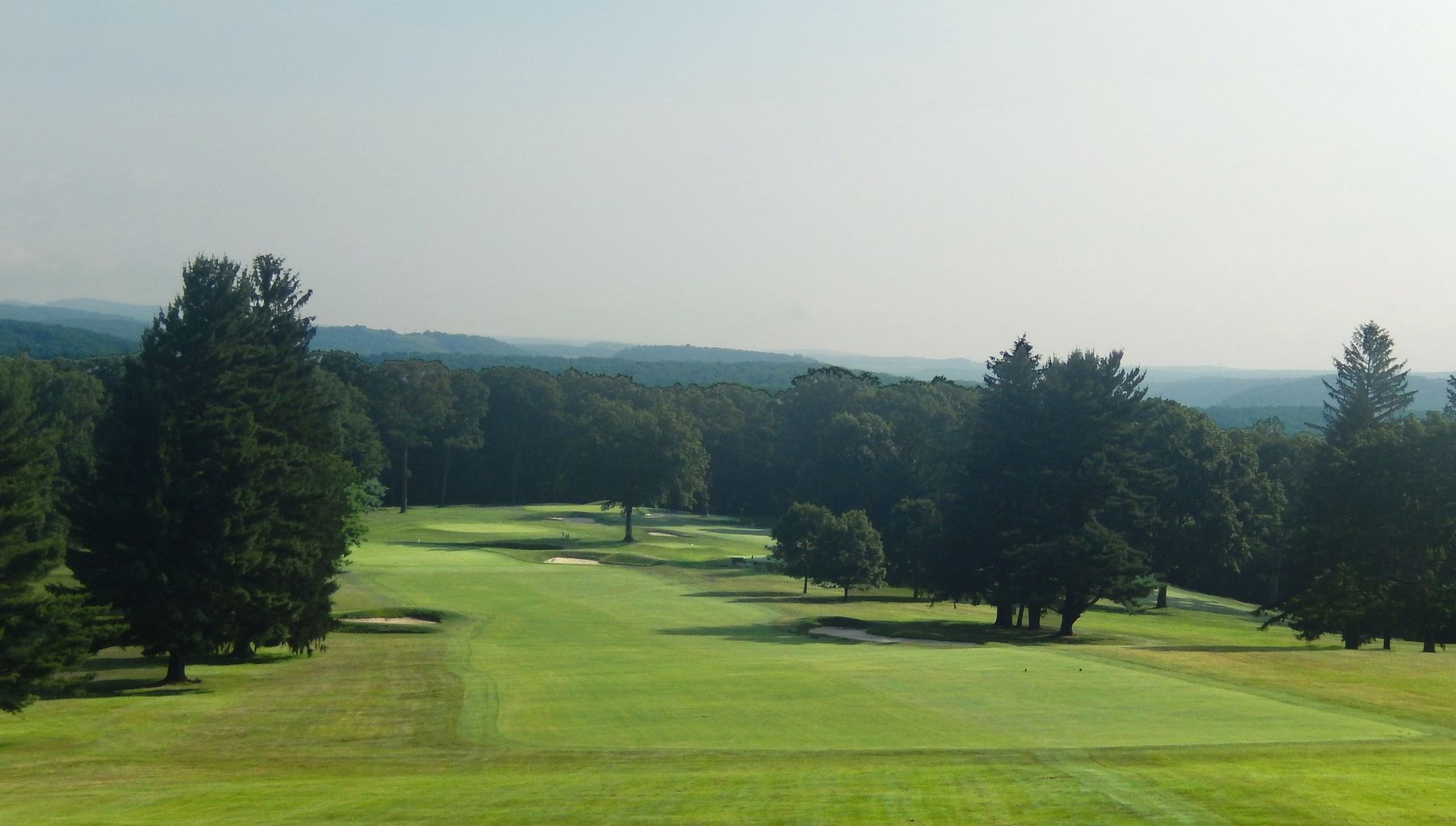Tillinghast's Sunnehanna Country Club located in Johnstown, PA, about an hour east of Pittsburgh, is a course deserving of more attention. Before discussing the course, I wanted to recognize the club's head pro, Carl Seelman, who could not possibly have been nicer to me and spent quite a bit of time pointing out and looking through old photographs of the course through the clubhouse. Also, the club's superintendent, Ben Little, had the golf course in absolutely superb condition, running firm and fast even in a week and month that had seen quite a bit of rain.
Sunnehanna is best known for hosting the Sunnehanna Amateur, one of the premier amateur tournaments in the country, whose past winners include the likes of Rickie Fowler, Webb Simpson, Allen Doyle, Billy Andrade, Scott Verplank and Ben Crenshaw. Remarkably, while the course can challenge the best amateur golfers in the country, it is enjoyable for a wide range of golfers, allowing for (and often encouraging) running approaches on most holes. In many cases, the clever golfer can play cautiously away from the trouble for his par, but the bold / low-handicap golfer playing for birdie will run the risk of a slight miss that immediately brings bogey or worse into the equation.
Trees remain present, lining the sides of many fairways, but an aggressive tree removal program has seen them pushed back to create significant corridor width. The bunker scheme as it sits today is changed from Tillinghast's original design, but a Brian Silva master plan should have that corrected in due time.
The clubhouse sits at the property's high point and the 420 yard first hole falls gently into a valley. Though many golfers will have a short club in their hand, the sharply front-to-back tilting green will quickly make fools of those golfers who think they should fly their approach pin high.

Climbing back to the clubhouse, the 400 yard par-4 second hole often plays as the most difficult hole in the Sunnehanna Amateur. While length alone will provide sufficient challenge for most, the hole is made more difficult by a severely tilted back-to-front green with a sharp false-front that makes running the ball onto the green nearly impossible.

The 380 yard third is, remarkably, drivable by some, but even so its virtues can make it a difficult birdie. A lone fairway bunker protects the high side of the fairway 230 yards from the tee, and the golfer must choose whether he is willing to lay-back, leaving a blind 150 yard approach, or challenge the bunker for a clear view of the putting surface.

Successfully finding the fairway is no guarantee of success as the green falls hard from the front-right to the back-left. If the pin is on the front of the green, a very delicate shot must be played to the front-right corner of the green, and any misjudgement can quickly lead to bogie. Much like Oakmont's 5th, golfers that play too long a tee shot are left wondering how to keep their pitch from running through the green and are left with no margin for error.
